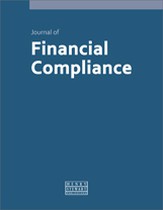Did that meeting discuss ‘inside information’? Insights from the USA and EU on when confidential information becomes material
Abstract
This paper aims to provide insights into the moment in which a piece of information becomes ‘inside information’; that is, information that cannot be abused by trading in the market, what in the USA is called ‘material non-public information’. In the EU, the notion of ‘inside information’ is also relevant to establish the disclosure duties for listed companies, which have to publish such information almost immediately (‘as soon as possible’), unless several conditions that allow the delay of disclosure are continuously met. In addition, if listed companies decide to delay, they have to record inside information, protect it, establish and update an ‘insiders list’, suspend buy-back programmes and monitor that the delay of disclosure does not result in misleading investors. Therefore, in such a framework, a crucial question listed companies have to ask themselves is whether confidential information circulating within the company is already ‘inside information’ or not. In this respect, owing to the twofold notion of inside information, an analysis of US cases of insider trading investigated by the Securities and Exchange Commission (SEC) over the decades is addressed here and insights from the related economic literature are offered in order to develop a concrete understanding of when information becomes ‘inside information’.
The full article is available to subscribers to the journal.
Author's Biography
Carlo Milia is Senior Officer, Market Abuse Investigation Unit, CONSOB (Italy). He serves as a financial economist in the Markets Division of CONSOB and is a member of the Market Integrity Standing Committee of the European Securities and Markets Authority (ESMA). Over his 25-year career he has been involved in activities related to the detection and investigation of market abuse cases. Since 1998, he has been dealing with regulatory issues on market abuse and on the related duties for issuers, intermediaries, asset managers and financial analysts while taking part in working groups at Forum of European Securities Commissions (FESCO), Committee of European Securities Regulators (CESR) and ESMA. In 2001 and 2012 he represented Italy at the Council for the reshaping of the EU regulation on market abuse (Market Abuse Directive and Market Abuse Regulation). As an expert, he has participated in several twinning projects coordinated by the EU Commission between CONSOB and national authorities of eastern European countries (Romania, Czech Republic, Poland, Bulgaria and the Republic of Moldova). He graduated at LUISS University and gained a PhD in economics at Bocconi University. He is a visiting lecturer in financial regulation and market microstructure courses at several universities.
